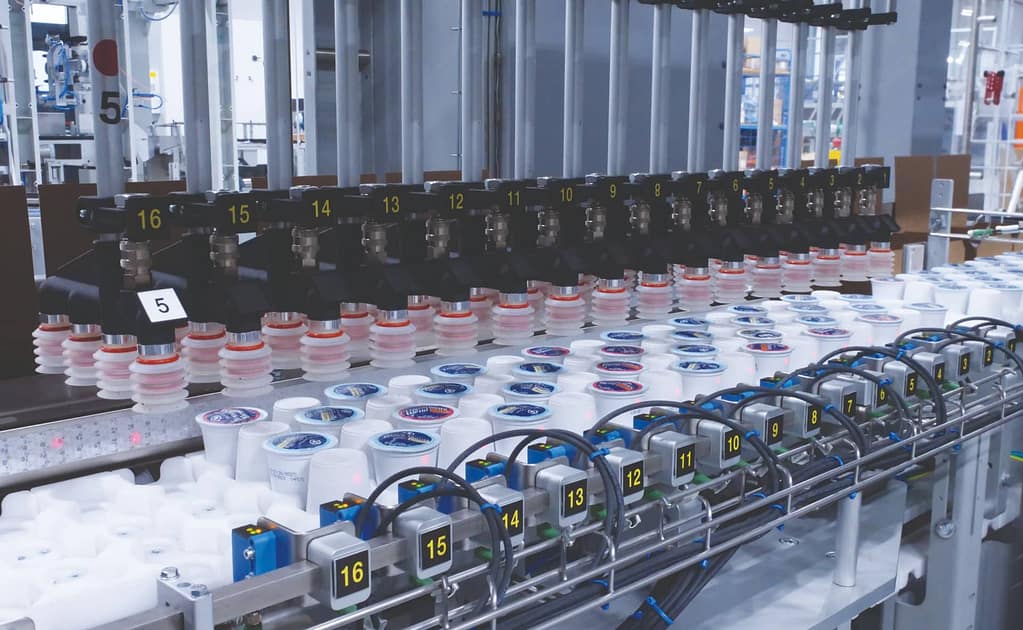[[{“value”:”

Cama Group details how its packaging solution has improved flexibility, speed, and efficiency at one of the United States’ leading coffee-cup companies.
With modern consumer society often focused on choice, tastes and preferences continuously shift. As a result, food and beverage companies must constantly evolve to find the next breakthrough product that will set the pace in the market.
In some industries, such as coffee and tea, established flavours continue to dominate, yet many consumers still want to be able to mix it up. According to the team at Italian secondary-packaging machine manufacturer Cama Group, multi-flavour products enable coffee roasters with capsule ranges to deliver the choice consumers crave.
For coffee company marketing departments, developing a multi-pack of different flavours is a simple product to establish. It’s also relatively straightforward for roasters and blenders as they only need to create multiple batches of individually flavoured coffees they already produce. Cama Group believes it’s the secondary-packaging department that feels the pressure as it must mix and match capsules precisely, efficiently, effectively, and at speed into shelf-ready or shelf-optimised packaging.
According to Sales Engineer Manager Davide Di Lorenzo, it’s this list of packaging pressures that leads many companies to turn to Cama Group for help.
“With vast experience in the food and beverage market, backed by a wide variety of successful installations for some of the biggest household names worldwide, we specialise in secondary-packaging machine solutions,” he says.
To demonstrate the company’s expertise, Di Lorenzo highlights a recent multi-machine project designed, developed, and deployed by Cama Group at a United States (US)-based vertically integrated coffee specialist supplying both own brand and private label products.
The three machines – two 800-cups-per-minute single flavour lines and one 2400-cups-per-minute multi-flavour line – have dramatically improved the company’s efficiency, speed, and throughput, helping it to cater to the near exponential rise in demand for cup pods in the US.
“The primary challenge was laid down by the multi-flavour packaging line,” says Di Lorenzo.
“As well as its own blends, varieties, and product counts, as a co-packer the company also has to cater for the different packaging demands of its private-label customers. This means the technology must be extremely flexible and adaptable. What’s more, between-batch downtime must be kept to an absolute minimum to maintain vital operational equipment effectiveness (OEE).”

In operation, the multi-flavour packaging process starts with four bowl feeders – supplied by a third party – to sort, orient, and convey single-flavour cups. The output from each bowl feeder is diverted into two lanes, each of which feeds and orients cups to one of two banks of delta robots – specially designed by Cama for the precise needs of secondary-packaging operations. The first bank receives four lines (cup flavours) face up and the second receives four lines face down, with two cups either side of the central conveyor.
The first bank picks up eight inverted cups (four x two flavours) from one side and then eight inverted cups (four x two flavours) from the other, and places them in a checkerboard pattern of four x four cups on a central conveyor. The second bank of robots does the same, but with cups that are face up. This array is then placed onto the conveyor so it nests into the gaps between the inverted cups.
This now-complete layer of 16 cups is picked up by another delta robot using a vacuum gripper before being placed into a pre-erected carton. This process is then repeated – with the carton layers being alternated so the cups rest top-to-top and bottom-to-bottom – until the batch- or customer-specific product count is reached. This count can be anything between 32 and 120 cups per carton, placed in different configurations.
“This packaging line demonstrates Cama Group’s capabilities to combine complex multi-flavour packaging arrays with precision, delicate handling, speed, and throughput,” says Di Lorenzo.
“The coffee company now also has the ability to deliver multiple counts, as the machine can also pack the same cartons with product counts that are not multiples of eight. For example, you could have a product count of 50, which could be a 48+2 promotion, or simply the historic product count for one of the private label customers.”
As part of the partnership, the US brand is also leveraging the Industry 4.0 capabilities of the Cama solution, which includes augmented and virtual reality systems for training, maintenance, and operation.
“This technology means downtime is kept to an industry leading minimum between batches, with RFID (radio frequency identification) enabled part changeovers, while OEE is further boosted with a complete condition-monitoring solution. This keeps a close eye on temperature, vibration and humidity, as well as monitoring electrical and pneumatic supplies and usage,” he says.
Furthermore, Di Lorenzo highlights how Cama Group machines deliver the capabilities required by the manufacturer’s customers.
“Unlike other suppliers who may try to manipulate and modify their customers’ needs to force fit a machine they can supply from a limited portfolio, we tailored our solutions to each individual client,” he says.
“By having such a wide portfolio of machines, supporting technologies, styles and processes, Cama Group can deliver a bespoke, application-specific solution for the most demanding packaging challenges. There simply aren’t any compromises – the customer gets exactly what they want. With a Cama logo on it, you can be assured it really is the best in class.”
For more information, visit the Cama Group website.
This article was first published in the January/February 2025 edition of Global Coffee Report. Read more HERE.
The post Cama Group on improving flexibility and efficiency in secondary packaging appeared first on Global Coffee Report.
“}]]


